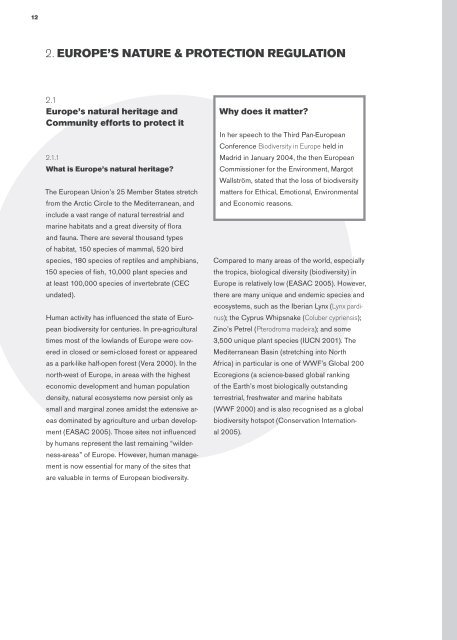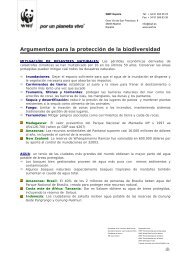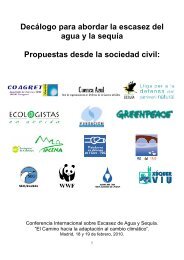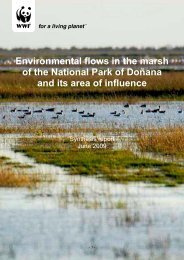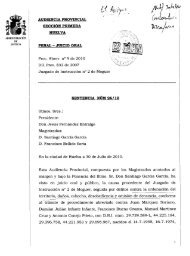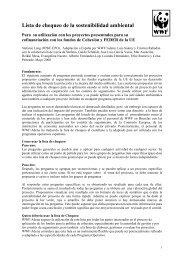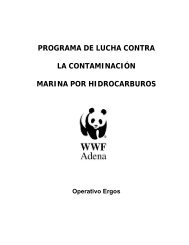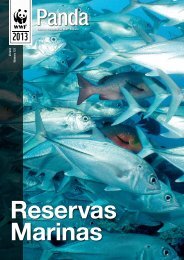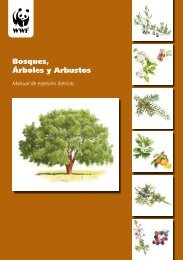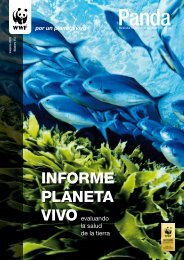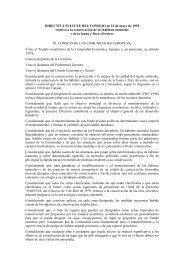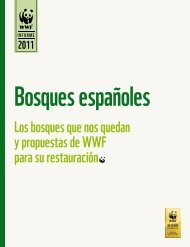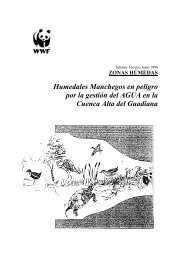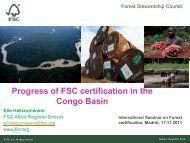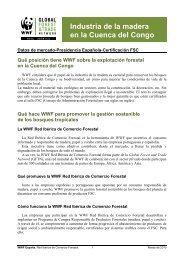Conflicting EU Funds - WWF
Conflicting EU Funds - WWF
Conflicting EU Funds - WWF
You also want an ePaper? Increase the reach of your titles
YUMPU automatically turns print PDFs into web optimized ePapers that Google loves.
12<br />
2. <strong>EU</strong>ROPE’S NATURE & PROTECTION REGULATION<br />
2.1<br />
Europe’s natural heritage and<br />
Community efforts to protect it<br />
2.1.1<br />
What is Europe’s natural heritage?<br />
The European Union’s 25 Member States stretch<br />
from the Arctic Circle to the Mediterranean, and<br />
include a vast range of natural terrestrial and<br />
marine habitats and a great diversity of flora<br />
and fauna. There are several thousand types<br />
of habitat, 150 species of mammal, 520 bird<br />
species, 180 species of reptiles and amphibians,<br />
150 species of fish, 10,000 plant species and<br />
at least 100,000 species of invertebrate (CEC<br />
undated).<br />
Human activity has influenced the state of European<br />
biodiversity for centuries. In pre-agricultural<br />
times most of the lowlands of Europe were covered<br />
in closed or semi-closed forest or appeared<br />
as a park-like half-open forest (Vera 2000). In the<br />
north-west of Europe, in areas with the highest<br />
economic development and human population<br />
density, natural ecosystems now persist only as<br />
small and marginal zones amidst the extensive areas<br />
dominated by agriculture and urban development<br />
(EASAC 2005). Those sites not influenced<br />
by humans represent the last remaining “wilderness-areas”<br />
of Europe. However, human management<br />
is now essential for many of the sites that<br />
are valuable in terms of European biodiversity.<br />
Why does it matter?<br />
In her speech to the Third Pan-European<br />
Conference Biodiversity in Europe held in<br />
Madrid in January 2004, the then European<br />
Commissioner for the Environment, Margot<br />
Wallström, stated that the loss of biodiversity<br />
matters for Ethical, Emotional, Environmental<br />
and Economic reasons.<br />
Compared to many areas of the world, especially<br />
the tropics, biological diversity (biodiversity) in<br />
Europe is relatively low (EASAC 2005). However,<br />
there are many unique and endemic species and<br />
ecosystems, such as the Iberian Lynx (Lynx pardinus);<br />
the Cyprus Whipsnake (Coluber cypriensis);<br />
Zino’s Petrel (Pterodroma madeira); and some<br />
3,500 unique plant species (IUCN 2001). The<br />
Mediterranean Basin (stretching into North<br />
Africa) in particular is one of <strong>WWF</strong>’s Global 200<br />
Ecoregions (a science-based global ranking<br />
of the Earth’s most biologically outstanding<br />
terrestrial, freshwater and marine habitats<br />
(<strong>WWF</strong> 2000) and is also recognised as a global<br />
biodiversity hotspot (Conservation International<br />
2005).


